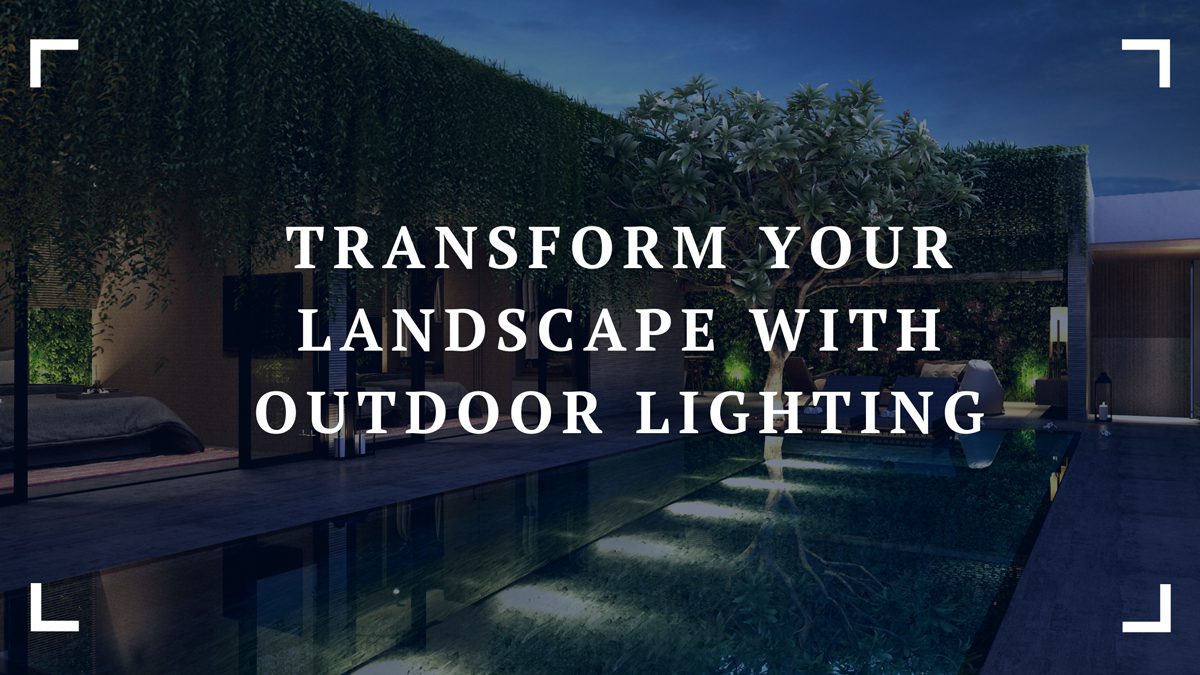Outdoor lighting can dramatically transform the appearance of your landscape, making it more inviting, functional, and visually appealing. It not only enhances your home’s curb appeal but also increases safety and security. In this article, we will delve into various design tips and ideas to help you create an outdoor lighting plan that brings your landscape to life.

1. Understand the Basics of Outdoor Lighting
Before you begin designing your lighting plan, familiarize yourself with the basic types of lighting and their purposes:
- Ambient lighting: This is the main source of light that illuminates the overall area, creating a comfortable and welcoming atmosphere.
- Task lighting: This type of lighting serves a specific purpose, such as illuminating walkways, decks, or outdoor kitchens.
- Accent lighting: Accent lighting is used to highlight specific features in your landscape, such as architectural details, trees, or sculptures.
By understanding these different types of lighting, you can create a balanced and cohesive design that caters to your specific needs and preferences.
2. Focus on Key Areas
Identify the key areas in your landscape that you want to illuminate. These may include:
- Entrances and exits
- Walkways and paths
- Patios and decks
- Outdoor seating areas
- Architectural features
- Trees and plants
- Water features
Focusing on these essential areas will ensure that your design is both functional and visually appealing.
3. Use Layered Lighting
Creating a lighting scheme that is comprehensive and adaptable requires the use of a number of various kinds of illumination, which is what is meant by the term “layered lighting.” By taking this method, you may create a wide range of effects and atmospheres while still ensuring that all parts of your landscape receive sufficient lighting. If you want to create an outdoor setting that is dynamic and interesting, you should think about utilizing a combination of ambient, task, and accent lighting.
4. Incorporate Energy-Efficient Solutions
Energy efficiency is an essential consideration when designing your outdoor lighting plan. Opt for LED or solar-powered lights to reduce energy consumption and lower your utility bills. LED lights, in particular, offer several benefits, including:
- Longer lifespan compared to traditional bulbs
- Lower energy consumption
- Greater durability
- A wide range of color temperatures and brightness levels
Solar-powered lights, on the other hand, harness energy from the sun during the day and store it in batteries to power the lights at night. They require little maintenance and can save you money on your energy bills in the long run.
To ensure that your outdoor lighting design is both energy-efficient and professionally installed, consider hiring a reputable lighting contractor like Blingle in Lenexa. Their team of experts specializes in energy-efficient lighting solutions and can help you select the best options for your landscape while ensuring that all fixtures are properly installed and optimized for maximum performance.
5. Choose the Right Fixtures
Selecting the right fixtures for your lighting design is crucial to achieving the desired look and functionality. Consider the following factors when choosing fixtures:
- Style: Choose fixtures that complement your home’s architectural style and overall aesthetic.
- Size: Ensure that the fixtures are proportional to the area they will illuminate and the surrounding elements.
- Material: Opt for durable, weather-resistant materials that can withstand outdoor conditions and require minimal maintenance, such as aluminum, brass, or stainless steel.
- Placement: Consider the location and positioning of each fixture to maximize its impact and avoid creating unwanted shadows or glare.
6. Experiment with Color Temperatures
Different color temperatures can dramatically impact the mood and ambiance of your outdoor space. Warm white lights (2700K to 3000K) create a cozy, inviting atmosphere, while cool white lights (4000K to 5000K) provide a crisp, modern look. Experiment with different color temperatures to achieve the desired effect in various areas of your landscape.
7. Highlight Unique Features
Use accent lighting to draw attention to unique features in your landscape, such as sculptures, water features, or specimen plants. Spotlights, uplights, and downlights are excellent options for showcasing these elements and adding visual interest to your outdoor space.
8. Create a Sense of Depth
To create a sense of depth and dimension in your landscape, use a combination of low-level and high-level lighting. For example, place path lights along walkways and use uplights or downlights to illuminate trees or architectural features. This layered approach will add visual interest and make your outdoor space feel more expansive.
9. Ensure Safety and Security
In addition to enhancing the beauty of your landscape, it should also contribute to the safety and security of your property. Illuminate dark corners, steps, and potential tripping hazards to reduce the risk of accidents. Additionally, consider incorporating motion sensor lights to deter potential intruders and alert you to any movement around your home.
10. Plan for Future Expansion
When designing your outdoor lighting plan, consider any future changes or additions you may want to make to your landscape. This could include new plants, hardscape elements, or additional seating areas. By planning for these possibilities, you can ensure that your lighting design remains adaptable and functional as your landscape evolves.
By following these design tips and ideas, you can transform your landscape with outdoor lighting that is both beautiful and functional. From choosing the right fixtures and color temperatures to focusing on key areas and incorporating energy-efficient solutions, there are numerous ways to create a stunning and inviting outdoor space that you can enjoy all year round.


